TFZ King Pro Review – Resolution

Pros –
Excellent resolution, Spacious stage, Striking design and build
Cons –
May be too bright for some, Slightly thinner midrange presentation
Verdict –
The King Pro is a godsend for lovers of female vocals and clarity. It has class-leading technical ability.
Introduction –
One can tire of the current trend of “pro” earphones, where manufacturers make subtle tweaks to slightly under-performing models and sell them at a higher-price; it’s like selling the beta version of a software then charging buyers again for the finished version. Though we’ve no doubt had some terrific models as a result, with earphones like the Simgot EN700 Pro and Fiio F9 Pro quickly becoming fan favourites, one can’t help but think, this is what the EN700 and F9 should have been! It’s a small frustration and I don’t doubt the value offered by any of these models, but it is a scheme that represents how audio has become a business, not just a hobby.
With that said, TFZ have no such issue. By glancing at TFZ’s current popularity and market presence, it’s hard to believe that the company is just a few years old. They have a range of IEMs, all offering impressive quality at modest price points. The King was already a very well-performing earphone, that didn’t disappoint in either signature or technical performance. As such, I see the King Pro as a refinement and improvement, rather than a patch for an original error. At $170 USD, the King Pro is considerably more expensive than the vanilla King. But it brings a wealth of changes including a gorgeous all-metal build, improved cable and completely reworked internals. More details here and store link here.
Disclaimer –
I would like to thank Chi Kong Hui from Penon Audio very much for his quick communication and for providing me with the King Pro for the purpose of review. All words are my own and there is no monetary incentive for a positive review. Despite receiving the earphones free of cost, I will attempt to be as objective as possible in my evaluation.
Accessories –

The King Pro has a more premium unboxing experience than past TFZ earphones with packaging more inline with larger manufactures. Sliding off the outer sheath reveals the earphones and hard case within a cutout inlet.

The case is nice, an imitation Westone Vault case, one of my personal favourites. It’s a lot more protective than the pouch included with the original King. Inside are a variety of ear tips. TFZ include two sets, 3 pairs of small bore tips and 3 pairs of wide bore tips.

They also provide a pair of foam ear tips that provide a little more isolation. Unlike the original King, I actually preferred the large bore tips though I eventually settled on JVC Spiral Dots that sounded a little more coherent and provided a stronger seal.
Design –
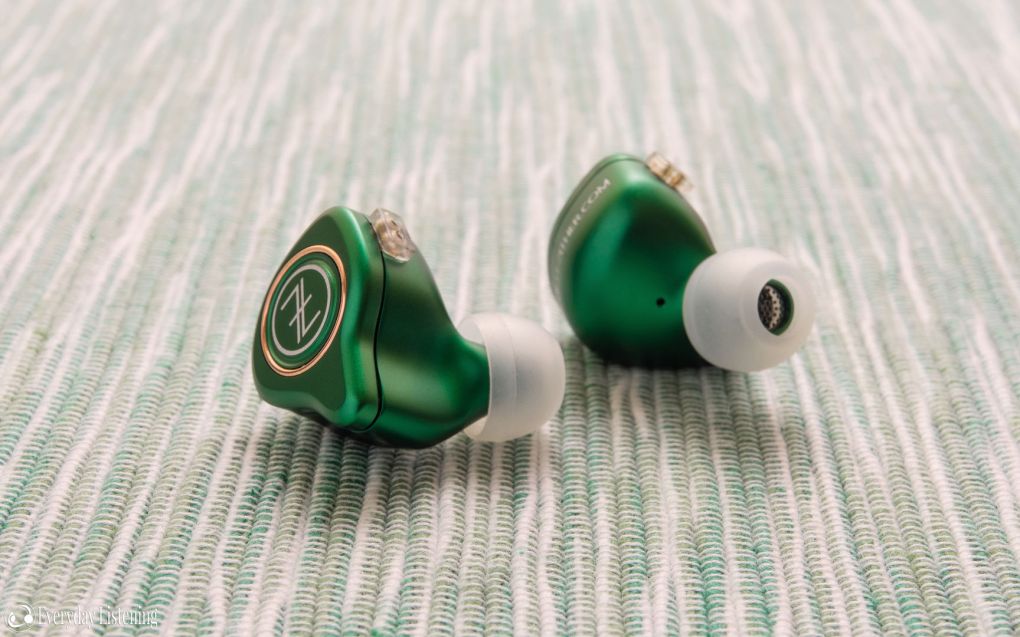
Essentially identical in shape to the original King, the Pro elevates itself through premium materials and improved finish. The Pro’s aluminium housings are available in a rich blue, red and green, all with a satin finish that catches light in interesting ways. The print is laser etched as opposed to printed and the tolerances are tight, with even seams and just very, very minor defects on one gold ring of my right earpiece.

The King Pro feels absolutely solid and surprisingly dense in the hand. As with the King, it’s a larger earphone, though it achieves comfort through ergonomic shaping. I didn’t find the Pro to form hotspots during my month of testing, lending it well towards longer listening sessions. Moreover, the King Pro isolates well, retaining bass presence and detail during commute and public transport.
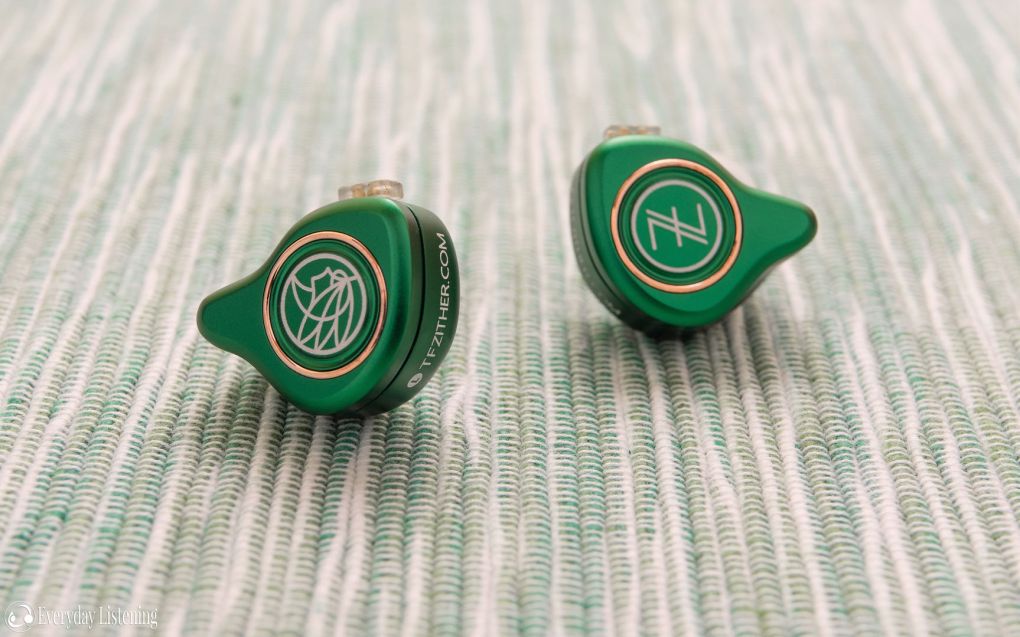
It’s not the most stable earphone due to its heavier housings, but I experienced no issues during commute besides some wind noise. Though well-built, some glue was evident in the seam between the outer face and main housing. This could be unit specific and didn’t affect performance. Interestingly, the King Pro has no driver flex which is a step up from the King.
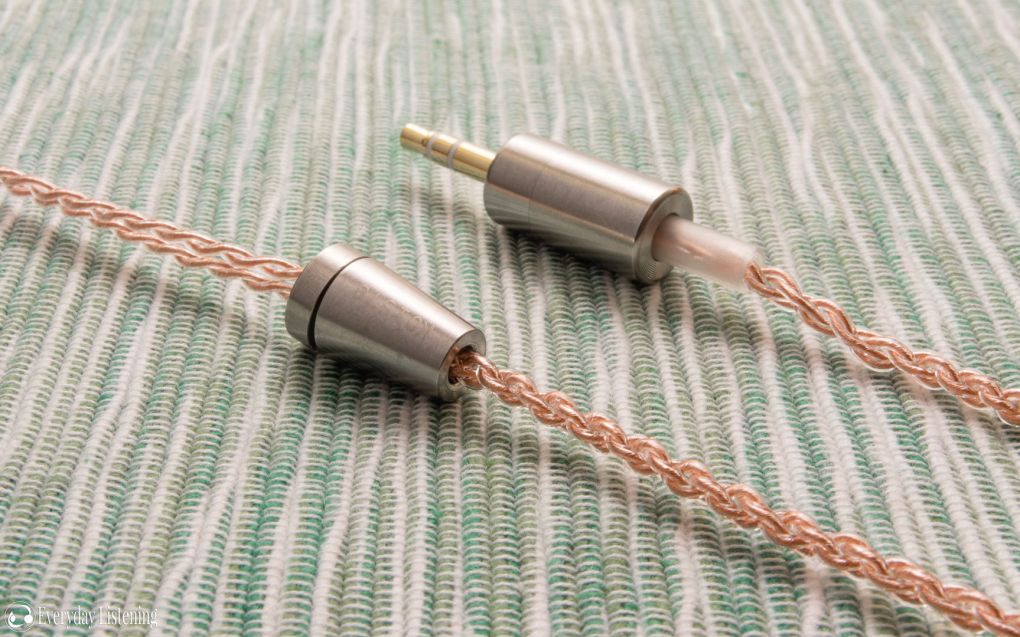
The King Pro uses a 0.78mm 2-pin removable cable. The connector protrudes slightly from the earphones with a recessed plug on the cable itself, so though compatible with aftermarket cables, they may protrude too much. The cable itself is thin but solid. It feels fairly soft but has a little memory. The plug and y-split are metal but their weight can feel cumbersome at times. The pre-moulded ear guides weren’t well-shaped for my ears but were easily reformed using a hairdryer. I vastly prefer this over a memory wire solution.
Sound –
Tonality –
The King Pro carries TFZ’s house signature realised through greater balance and technical aptitude. It has a sub-bass focussed low-end, slightly brighter midrange and enhanced air up top. This may sound familiar coming from TFZ’s previous Exclusive earphones. So what really differentiates the King Pro from the original King is its introduction of greater midrange body. Ultimately, the King Pro is more natural and realistic while remaining just as resolving.
Bass –
The King Pro has a full, dynamic low-end with excellent transience and control. Sub-bass holds focus through modest emphasis. Rumble is clear and defined with enough quantity to foster physical impact and retain fullness in louder environments. It’s tight and well-controlled with greater extension than the original King; and the Pro easily keeps pace with complex and faster-paced tracks. Mid-bass has a hair of emphasis but remains quite balanced overall. This produces slightly larger bass notes though it doesn’t sound remotely rounded, tubby or bloated in any way. As such, the King Pro’s low-end is impressively transparent.
Upper-bass is slightly attenuated by comparison, heightening bass/midrange separation. That said, it is noticeably more linear than past TFZ earphones. So though it maintains the same sense of transparency and vocal clarity, it sounds more integrated and natural overall. Still, from basic description of its signature, one isn’t able to fully-appreciate the King Pro. In many regards, it’s very similar to the original King and even the IT01 to an extent, though the way it executes this style of tuning is masterful. Speed is its greatest asset, alongside accurate tone that keep its lows composed. The King Pro doesn’t sound overdone, rather sounding full yet defined and well-separated.
Mids –
Though more natural than past TFZ earphones, mids remain slightly cool and thin due to the Pro’s recessed lower midrange. The King Pro also has a clearly brighter signature, I wouldn’t characterise it as a mid-focused earphone, but it is very clear and discerning of fine details. It’s also a very transparent earphone due to its cool/neutral tone, and one with very defined layers. Male vocals are slightly laid-back, but never sound explicitly recessed due to their excellent definition. Lower-mids don’t present as hollow or strained, though the King Pro still errs on the side of clarity over natural timbre.

On the contrary, instruments and female vocals are brought forward; presented with the same superb clarity, just with greater focus. And, as the King Pro is gradual in its emphasis and fairly linear in its transitions, female vocals extend well while remaining accurately articulated. What’s most impressive about the King Pro is its well-judged lower-treble. This serves to smooth its midrange, counteracting the effects of its attenuated lower-midrange to produce what I would consider to be quite a refined presentation. The King Pro compliments its refinement with terrific resolution and, due to the nature off its treble tuning, sibilance is not enhanced and vocals retain plenty of density.
Highs –
The King Pro refines the signature pioneered by the original King. Where TFZ’s prior flagship focussed on aggressive foreground detail and heightened air, the King Pro trades some crispness for more natural body and greater detail retrieval. It does so through a more restrained lower-treble that lacks the immediate bite of the King, but enables more accurate instrument body. It’s still a crisp earphone and a very detailed one. As such, instruments sound more coherent within its image due to more accurate placement, and the Pro’s sound is both more textured and more realistic. This is most notably highlighted by strings and cymbals that have impressively natural decay and shimmer.
The King Pro also demonstrates far more control than prior models and highs never encroach upon stridence or peakiness as on the original King could. That said, the Pro retains great air through a focus on the middle treble frequencies. As a result, it doesn’t have the darkest background and some lower-treble details can become overshadowed. However, as the Pro also lacks the upper-treble peak of the King, it still sounds fairly clean and well-composed. Moreover, the King Pro extends more linearly and slightly further into the highest frequencies, benefitting resolution and providing a little extra sparkle. Not only does the Pro’s more gradual, integrated emphasis’ flatter foreground details with greater realism, its more realistic body enables noticeably stronger background and micro-detail retrieval.
Soundstage –
The King Pro has a relatively spacious stage that is well-balanced between width and depth. It lacks the out of the head scale of certain earphones like iBasso’s IT01 mostly due to its more forward midrange. However, imaging is very strong, reinforced by greater balance and linearity combined with excellent transience. Though slightly thin with a little middle-treble glare, the King Pro has very defined and well-detailed layers. It’s a well-separated earphone on account of its excellent end to end extension, enhanced transparency and slightly thinner body. As such, the King Pro is well suited towards faster and more complex genres.
Driveability –
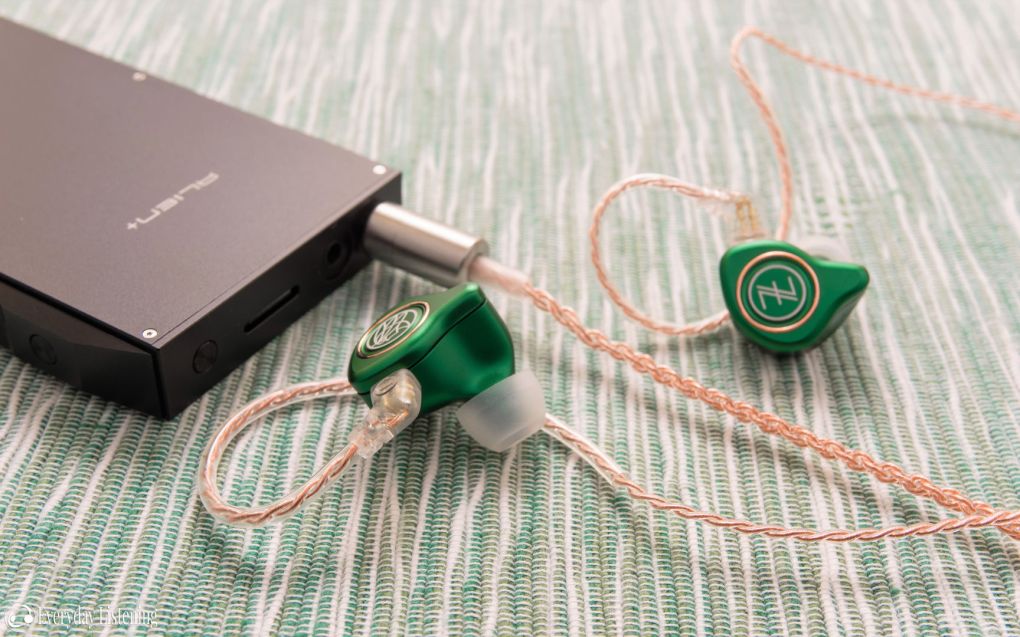
The King Pro has a high 55ohm impedance partially redeemed by a 108dB sensitivity. As such, it requires a fair amount of voltage to achieve higher listening volumes, though it’s also more consistent in signature between sources than most. Despite this, I found the King Pro to be fairly well-driven from a good smartphone. The cheaper Q1 MKII provided a nice bump in accuracy while more expensive DAPs provide greater balance and resolving power. Still, the King Pro isn’t overly picky with its sources despite its higher impedance and it is both very consistent and hiss resistant in return.
HTC U11: Slightly greater mid-bass presence creating a warmer tone, less controlled sub-bass. More v-shaped signature on account of a smoother, more laid-back upper midrange. Vocals are clear but can lack some extension. More width biased presentation, less spacious and separated. Nice resolution, reduced detail and micro-detail compared to DAPs. No audible hiss.
Fiio Q1 MKII ($100): Softer sub-bass, slightly warmer mid-bass. Lifted lower-midrange creates a full midrange. Smooth, slightly laid-back upper-midrange. Crisp, slightly forward detail presentation, nice micro-detail retrieval. Darker background sounds cleaner. Stage properties are similar to the X7 II, though imaging is less precise. Still very coherent, nice separation if a little warm. No hiss.
Fiio X3 III ($200): Enhanced mid-bass and slightly attenuated sub-bass creates a warmer, fuller sound. Slightly lifted lower-midrange produces more full-bodied vocals. Upper-midrange is more laid-back which is subjectively more balanced. Well-detailed, slightly narrower soundstage, defined layers but less separation. No audible hiss.
Shozy Alien+ ($450): Slightly more organic source though quite transparent from mid-bass through midrange. Extended sub-bass with slightly enhanced impact. Slightly forward vocals, clear and slightly full-bodied. Slightly lifted lower-treble; clear, crisp presentation with forward details. Great treble extension, darker background but great resolution. Modest soundstage size, well organised and separated. No audible hiss.
Hiby R6 ($630): The R6 delivers slightly enhanced sub-bass impact but is fairly neutral in tone. Mids are linear but are slightly clearer due to the R6’s lifted lower-treble. Details are more upfront on the R6, it is very crisp. The R6 has great extension and resolution, its stage is very wide with great separation. No audible hiss, the King Pro was not affected by its output impedance.
Fiio X7 II ($650): Mostly balanced pairing, very slightly larger bass notes, nicely transparent midrange. Treble has a slight bump in energy, lower and middle treble have a hair of emphasis. Doesn’t have the darkest background but has pleasing air and clarity. Stage prioritises coherence over dimension, great imaging and transience. Still has great separation due to transparency, very clean image. No hiss.
Comparisons –
TFZ King ($100): The Pro carries the same basic shape as the King but implements more premium full-metal housings. As such, the fit and isolation on both is similar though the Pro is slightly heavier. The Pro has a superior cable to the King, it’s a little softer with more premium terminations. Both use 0.78mm 2-pin connectors though early King’s, such as mine, have a fixed cable.
The King is a more sculpted earphone where the Pro’s emphasis’ are more evenly metered. The King’s low-end sounds similar to the Pro and measures similarly too. Both are agile, and defined but the Pro demonstrates slightly greater control and separation. The Pro has a similarly recessed lower-midrange, but its midrange is a lot more natural due to reduced treble colouration and a slight centre midrange lift. As such, its vocals sound smoother, more refined and more naturally bodied. This is most noticeable with male vocals that are more natural and less recessed, female vocals are also smoother while remaining very clear and extended. Lower-treble is the greatest differentiator and I’m sure it’ll divide buyers. The King has a noticeable lower-treble emphasis where the King Pro is more neutral.
As such, the King is considerably more detail forward, sounding more articulate, aggressive and crisp. On the contrary, the Pro sounds more natural and it retrieves more detail as it’s more linear; the King sounding thin and tizzy by comparison. Both have middle treble emphasis with great air, however, relative to its smoother lower-treble, the Pro has even more air at the cost of overshadowing some lower-treble details. On the contrary, the Pro extends further and has better retrieval of micro-detail. Both craft a large stage, the airier, less upper mid-forward Pro has larger dimensions. The Pro both images and separates better as it is less peaky and more linear in general.
Despite the release of the Pro, I still have a lot of respect for the original King as it’s almost as technical and more engaging in its tuning. Its main downfall is its thin midrange, especially regarding male vocals. That said, many will prefer its more aggressive detailing even if the Pro demonstrates greater nuance throughout.
iBasso IT01 ($100): The IT01’s plastic build doesn’t even compare with the meticulously crafted King Pro. That said, both are comfortable and well isolating earphones, the IT01 is slightly more stable due to its lighter housings. The IT01 has a softer, thicker cable that feels more premium than the King Pro’s cable, though both are removable/replaceable.
The IT01 is immediately more v-shaped where the King Pro is brighter and more balanced. The IT01 has greater sub-bass emphasis, but isn’t as tight or controlled as the Pro down low. The King Pro has a slightly cleaner mid-bass, its low-end isn’t as impactful but is more linear, detailed and defined. The King Pro has a slightly more recessed lower-midrange so it doesn’t sound quite as naturally bodied as the IT01. Male vocals are slightly more realistic on the IT01 though also more recessed. The King Pro sounds more neutral in its upper midrange where the IT01 is slightly more organic.
The IT01 has slightly laid-back female vocals where the King Pro is slightly forward. The IT01 has noticeably more lower-treble crispness than the King Pro. That said, it is thinner and slightly less detailed. The King Pro has noticeably more middle treble, it has a lot more air and extends better at the very top. The King Pro is generally more revealing and resolving though the IT01 sounds cleaner. The IT01 has a wider stage but considerably less depth. The King Pro images slightly better, both are very well separated.
Simgot EN700 Pro ($150): The EN700 Pro is also entirely metal, both feel very solid. The Simgot may even have a slightly higher level of finish as its seam is a lot smaller than the King, though this could be by design. The King Pro isolates a lot more making it the clear choice for frequent commuters. Both use 2-pin removable cables, the EN700 Pro’s 8-core cable is softer and sturdier.
The EN700 Pro is just as balanced overall but lies on the opposite side of the spectrum as a warmer, more natural earphone with slightly laid-back mids. The King Pro has greater sub-bass extension and impact. The Simgot is slightly bassier with greater focus on mid-bass, creating a warmer tone but also introducing some bloat. The King Pro is more transparent and defined down low, demonstrating greater control. Lower-mids are more upfront on the Simgot, producing a fuller midrange. Male vocals are slightly more recessed and slightly warm where the King Pro is slightly cool. Upper-mids are smoother on the EN700 Pro and more neutrally positioned. The King Pro is slightly forward and more neutral in tone.
It has greater clarity and extension with more linear transition into lower-treble. The EN700 Pro has slightly enhanced lower-treble that has greater contrast next to its smoother upper-midrange. As such, it sounds crisper than the King Pro and is just as detailed if not slightly more so. The king Pro has a lot more air while the EN700 Pro sounds cleaner and more balanced. The King Pro extends better, delivering greater resolution and micro-detail. The King Pro has more depth than the EN700 Pro but a little less width. Both image very well, the EN700 Pro is a little more balanced while the King Pro is faster. The King Pro has better separation on account of its cooler sound with exception of treble where middle-treble can overshadow other elements.
Fiio F9 Pro ($150): The F9 is a considerably smaller earphone that shares a similarly solid aluminium build. The Fiio is built slightly better with a finer finish. Both are comfortable and isolate similarly, the King Pro slightly more. The Fiio uses an MMCX removable cable, the balanced cable is softer than the King Pro’s cable but doesn’t feel as sturdy.
The Fiio is more v-shaped compared to the King Pro, especially with regards to treble which is very aggressive on the F9 Pro. The F9 Pro also has greater bass emphasis with a modest bump in mid-bass. However, it doesn’t extend nearly as well King Pro which is more physical with greater impact. The King Pro is also more defined and neutral in tone as its mid-bass is cleaner and more controlled. The F9 Pro’s midrange is more similar to the original King than the Pro. It is very clear but also thin due to a recessed lower-midrange, narrow band centre midrange emphasis and aggressive lower-treble. Though the King Pro’s lower-midrange is just as recessed, it’s more linear through its centre midrange to lower-treble. As such, it sounds a lot more natural with greater body and texture.
Vocals are more forward on the King but presented with greater refinement. The F9 Pro has great crispness to its sound, imbued by a clear but polarising lower-treble accent. As such, the F9 Pro has more foreground detail, but it tends to overshadow higher elements. It also has a cleaner background where the King Pro has a lot more air and instrument body. Still, both the F9 Pro and King Pro extend very well, providing high-resolution, though this is more evident on the more linear King. The King Pro has a larger soundstage with better layering and instrument placement. Both are well separated, the King Pro more so in its low-end, the F9 Pro more so through its midrange.
1More Quad Driver ($200): 1More products are renowned for their build quality and the Quad Driver is no exception. It feels denser than the King Pro and more meticulous in its construction. The King Pro isolates more and has a more stable over-ear fit. The Quad Driver also has a fixed cable that feels relatively sturdy but also quite stiff and springy. As such, the King Pro is the clear choice for commute and travel.
The Quad Driver is a u-shaped earphone, warm and slightly dark above a small lower-treble spike. The Quad Driver is bassier and considerably warmer, with a mid and upper-bass focus. It has less sub-bass extension than the King Pro, and a much smoother texture. On the contrary, the King Pro is more agile, a lot cleaner and more defined. Lower-mids are enhanced on the Quad Driver, producing a warm, full-bodied midrange that contrasts to the very clear, transparent King Pro. The Quad Driver has a considerably more recessed centre midrange, creating more laid-back vocals. It sounds veiled next to the very clear, extended King Pro though I wouldn’t characterise the Quad Driver as an explicitly veiled earphone in isolation. Upper-mids are a little more forward though the King Pro has more intimate female vocals yet.
The King Pro is a lot clearer while the Quad Driver is full and warm. Treble is slightly crisper on the Quad Driver due to its spiked lower-treble. However, it’s thin and peaky, producing a thin, inconsistent instrument presentation. Though not as aggressive, the King Pro is a lot more linear and a lot more detailed. It extends further, delivering greater resolution and a lot more air. The Quad Driver also produces quite a large stage though the King Pro has a huge advantage when it comes to separation. The Quad Driver is very three-dimensional in its imaging due to its well-bodied background layers though I wouldn’t characterise it as especially accurate.
Dunu Falcon-C ($200): The Falcon-C also has terrific build quality with liquid metal housings that feel super smooth and impeccably finished. The Falcon-C is considerably smaller and may be more comfortable for smaller eared listeners. The King Pro isolates a little more though both are more than adequate for public transport. Both use removable cables, the Falcon-C cable is softer and thicker, but also has a rubbery exterior.
The Falcon-C’s signature is quite similar to that of the King Pro, but its midrange isn’t as forward and its treble is more even between lower and middle treble. As such, it’s slightly more engaging and u-shaped. Sub-bass is emphasized on both, the Falcon-C is slightly tighter while the King Pro is slightly meatier. Both are very defined and agile, the Falcon-C a little more so. The Falcon-C has a similar midrange presentation, its neutral to slightly cool in tone and brighter in signature. That said, the Falcon-C is less upper-midrange forward, with similarly positioned male vocals combined with more neutrally positioned upper-mids. It’s more natural and has a cleaner presentation than the King Pro at the cost of a little extension and clarity.
The Falcon-C has a moderate lower-treble emphasis that extends quite linearly into a similarly elevated middle treble. The King Pro has less lower-treble and more middle-treble, it sounds brighter and airier as a result. The Falcon-C on the other hand, is more detailed and crisper in its delivery. It also has a darker, more composed background and extends just as well into the highest registers. I find the Falcon-C to be more resolving, aided by its cleaner top-end that lacks the glare of the King Pro. On the flipside, the King Pro has a larger soundstage, especially regarding width. Its layers aren’t as detailed as the Falcon-C, and instrument placement isn’t quite as good, but it has greater separation.
Verdict –
Audio is ever growing. And as a hobby grows, it becomes less leisure, more business. It only takes a glance at the fundamentals of business, to realise that Pro earphones are not good for the consumer. Budget earphones aren’t profitable in the long-term, offering potentially years of use with little incentive for upgrade for the majority of users; they aren’t perishables and all modern models effectively fulfil similar requirements. In turn, manufactures introduce planned redundancy; inherent flaws and monthly upgrades to maintain sales. It goes without saying that many buyers feel remorseful, even cheated; as if the original model they purchased has been reduced to a marketing tool for the new and improved. When that improvement appends a flaw, it becomes almost a necessity.
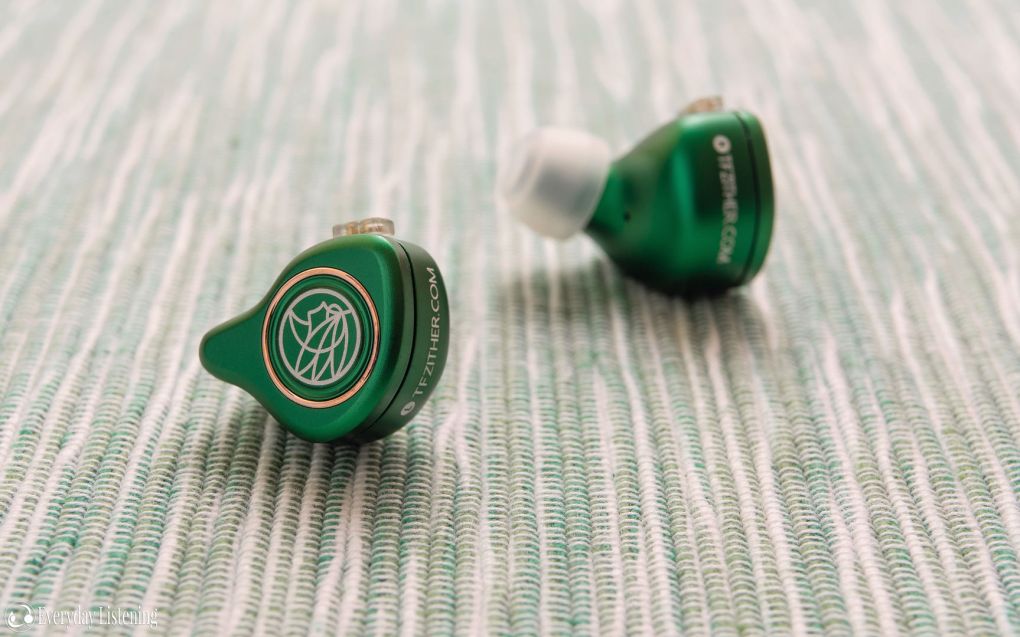
The King Pro doesn’t change this, but as mentioned, one can treat it as a refinement rather than a replacement. Because the Pro isn’t a must buy for owners of the King. It’s objectively superior, as it should be, but some will surely prefer the original’s crisper detail presentation. It does have the heftiest price increase among recent Pro releases, though it is also the best performer on a technical level, as the original King was in its respective price class. I’m especially enamoured by the Pro’s improved build quality; this is a stunning looking earphone with a rather unique design and a surprisingly ergonomic one despite its size. Its bright signature won’t suit everyone, nor will its cool midrange. However, the King Pro is a godsend for lovers of female vocals and clarity, and few will find issue with its top notch end to end extension and control.
The TFZ King Pro is available from Penon Audio and Amazon (International) for $170 USD at the time of writing. Please see my affiliate link for the most updated pricing, availability and configurations.


Very interesting review … I currently use the Oriveti Basic with the Cayin N3, and I like what I heard, but maybe the combination of the two exceeds a bit in body and warmth. King Pro would make a good couple with the cayin n3?
LikeLike
Hi Juan,
I don’t own the N3 but demoed one in Japan. I feel it would nicely complement the King Pro as its warmth will counterbalance the King’s slightly cool and moderately bright mid-range/high-end. On a side note, the King Pro is a nice technical upgrade from the Basic, but take into account that it’s considerably brighter in signature.
LikeLike
Hopefully the cayin can soften it a little. By the way, with what genres of music does it work best?
LikeLike
It’s a fairly typical Japanese style tuning. Works especially well for female vocals and strings but the King Pro is balanced enough to service most genres.
LikeLike
Hey,
First of all, you got a nice blog and your comparisons are great!
Can you compare, in a few lines, King Pro with Pinnacle P1?
Also, which one would you take between EN700 Pro and King Pro?
I’m looking to buy one of these 3: IT01, King Pro or EN700 Pro. If you say none of these would be an upgrade coming from P1 (in terms of micro detail or timbre), then i’d let them go. Or would you suggest something else (below 200).
Thanks for taking the time.
LikeLike
Hey,
Nice review, but I want to ask in your opinion which one should I go for between this 3 the Vsonic GR07, iBasso IT01 or the TFZ king pro? I see that all 3 of them are fairly similar and nearly at the same price.
LikeLike
Hi Ryan,
I noticed that this review is not published on headphonelist, and all these days I was waiting for this to happen. I’m glad I found it here since other blogs you’ve mentioned at the end are great too. Luckily, I found a great deal for king pro (120 usd) and ordered them before even finding your impressions here. Reviews are awesome and I’m hopeful I’ll definitely like them. I have a Cayin i5, do you think it makes a difference using them on low gain or high gain? I’ve always wondered but couldn’t conclude it on my own.
LikeLike
Hi. I own King Pro and your review is spot on. First thing I noticed is how open and detailed it is. Voices have space to shine and don’t feel congested. It’s airy, balanced with great vocals. Bass is clean and deep in the right amount. I’m treble sensitive and these never bothered me.
Much better than Falcon C with its piercing highs and recessed vocals.
A great surprise. Highly recommended.
LikeLike
The male vocals its not recessed?
LikeLike